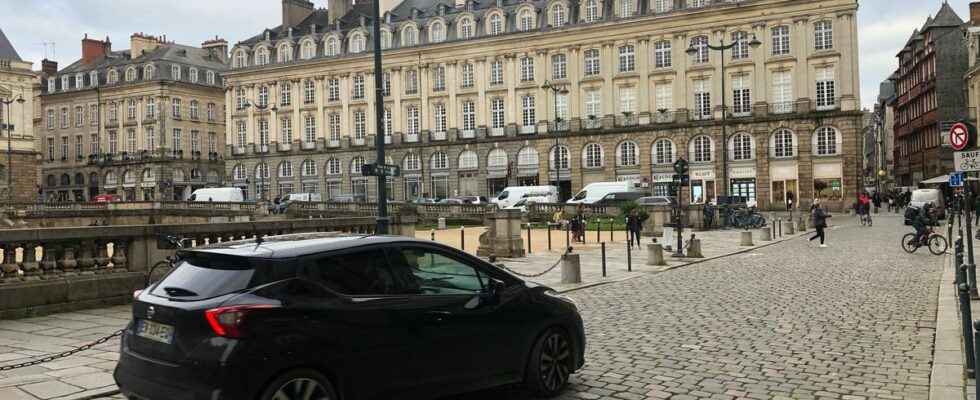To travel by car in the city center of Rennes, you will soon have to show your credentials. From February 13, a limited traffic zone (ZTL) will indeed be established in the historic heart of the Breton capital in order to reduce car traffic and calm the atmosphere. Well known in Italy, this system is already in force in several French cities such as Nantes, Strasbourg and Grenoble. In Rennes, the experiment will last four months in order to test and correct its operation if necessary. “But we will not backtrack,” already promises the city. Presentation of this ZTL which plans to make life difficult for motorists.
Fewer cars and more pedestrians and cyclists
Make the city center a peaceful area by promoting soft modes and reducing car traffic. This is the purpose of the restricted traffic zone which will come into effect on February 13. On this date, only authorized persons will be able to travel by car in the historic center of Rennes. “We are not eliminating the car in town but we just want to promote a reasoned use of the individual car”, justifies Valérie Faucheux, deputy delegate for mobility and travel. According to the elected official, the device aims in particular “to reduce noise and atmospheric pollution. “But also” to give another atmosphere to the city. “It makes it easier to walk around the historic center and to be able to let go of your children’s hands,” she says.
A perimeter that extends over forty hectares
Indicated by six panels which will mark its entrance, the limited traffic zone will extend in the city center of Rennes over a perimeter of 40 hectares, which will make it “the largest in France”, according to Valérie Faucheux.
It will first be tested in the northern part of the city center, between the quays of the Vilaine and the Hôtel-Dieu and between the Place des Lices and the Saint-Georges swimming pool. In the future, the ZTL could extend to other sectors, such as Boulevard de la Liberté.
Rights holders with or without proof
Some vehicles may continue to circulate within the perimeter of the limited traffic zone. This of course concerns emergency services, law enforcement, taxis, municipal services or car-sharing vehicles, which will not need proof of access. Residents, traders, craftsmen, movers or medical personnel will also be able to circulate in the ZTL provided they present proof that they are within their rights. A badge system should also be put in place in the coming months, especially for local residents.
A fine of 35 euros for offenders
The city first plans an awareness phase for the first few weeks. But after, the fines will start to rain down for motorists who have nothing to do in the city center. It will be the municipal police officers who will be in charge of verbalizing and will carry out unannounced checks at the various entrance gates of the ZTL. In Italy, the device works with cameras that photograph vehicles entering and leaving the area. “We would like to consider it but French law does not allow it for the moment”, regrets Valérie Faucheux.

